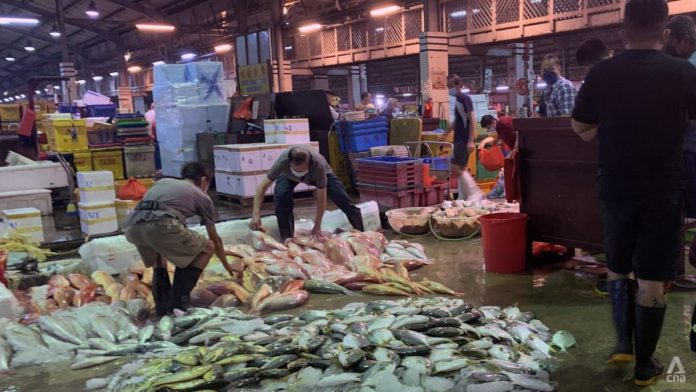Mr Ong is also confident that locally farmed sea bass, while darker in appearance, is as good as the ones from Kukup “if not better”.
Many years ago, a lot of the sea bass consumed in Singapore had a “muddy taste” as they came from land-based farms, Mr Ong explained.
“Kukup sea bass was raised in seawater farms, so they enjoyed that advantage (of being tastier). But this advantage is no more because a lot of the fish farms here are seawater farms,” he said, adding that the Government is also very strict about environmental and food safety standards.
FAIR PRICE MONITORING FISH PRICES
FairPrice supermarket, which sources its sea bass from farms both in Singapore and Malaysia, said it gets imported seafood through wholesalers “to offer an extensive range of harvested fishes that meet our product specifications”.
“For locally sourced seafood, we would work directly with local fish suppliers and farmers as they are able to meet required quality standards,” a spokesperson said, adding that this is part of a nationwide initiative to support locally grown food.
While FairPrice did not say if it has increased the price of sea bass sold at its outlets, the spokesperson said its fish prices have “remained stable in the past few months”.
“As a retailer, NTUC FairPrice is a price taker and our product prices are subject to fluctuations due to market conditions. This includes market forces of demand and supply, climate conditions, international trade agreements, taxation and currency fluctuations,” the spokesperson said.
“Other considerations also include overheads like manpower, infrastructure and transport.”

